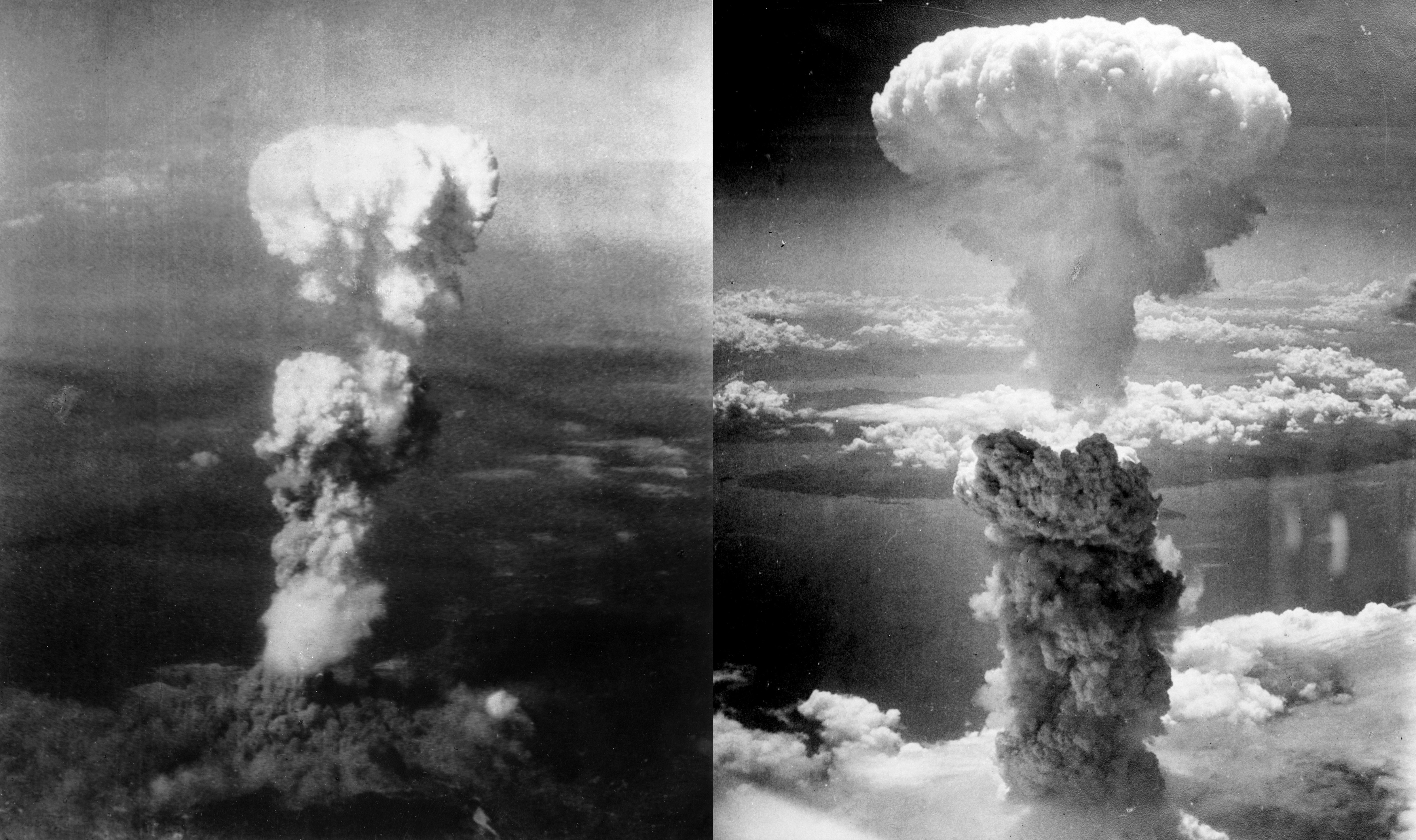
Nuclear Fission Explosions
Hiroshima (14 kt: 06 Aug 1945) and Nagasaki (22 kt: 09 Aug 1945)
Fission weapons
(popularly called "atom
bombs") produce an explosive release of energy
by bringing together a "critical mass" of radioactive uranium
or plutonium sufficient to produce a "chain
reaction." The "Little
Boy" bomb dropped on Hiroshima was a gun-assembly of
a critical mass of uranium. The Nagasaki "Fat Man" bomb was a
plutonium implosion weapon based on the "Trinity"
device tested at Alamogordo, New Mexico, in July 1945. Energy
yields are measured in thousands of tons of TNT (kilotons or
kt). For example,
the estimated yield of the "Little Boy" explosion was 14
kt = 59 TJoules of energy, and released
8×1012
PBq = 8 YottaBq of ionizing radiation.
"Atomic energy" misrepresents the nature of fission reactions, however the phrase came into use because the word 'nuclear' was avoided during the Manhattan Project due to security concerns. Typical chemical processes, including conventional explosives, use 'atomic energy' to produce a reaction. Robert Oppenheimer, Director of the Manhattan Project, was once asked by a Congressional committee if research isotopes could be used to produce 'atomic energy'. His response was that they could, and so could a bottle of beer.
"Atomic energy" misrepresents the nature of fission reactions, however the phrase came into use because the word 'nuclear' was avoided during the Manhattan Project due to security concerns. Typical chemical processes, including conventional explosives, use 'atomic energy' to produce a reaction. Robert Oppenheimer, Director of the Manhattan Project, was once asked by a Congressional committee if research isotopes could be used to produce 'atomic energy'. His response was that they could, and so could a bottle of beer.